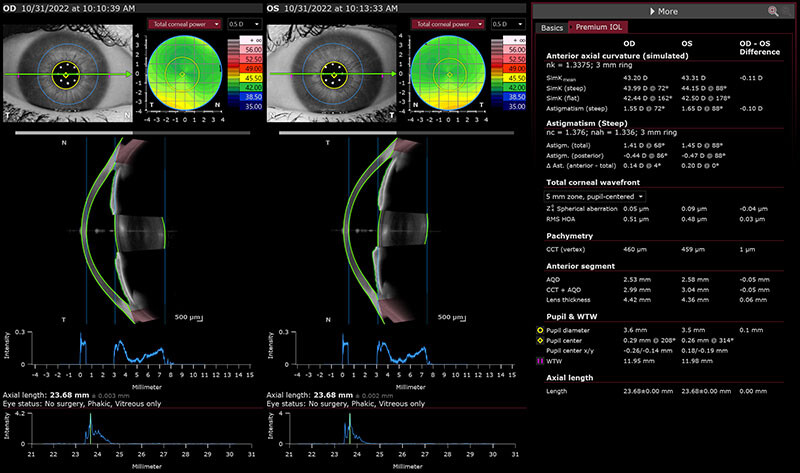ANTERION PLAYS SIGNIFICANT ROLE IN PREMIUM IOL SELECTION
“More than ever before ophthalmic surgeons are seeing patients with increasingly high refractive expectations following IOL implantation. Many of these patients have had refractive surgery in the past, but do not always think of LASIK as surgery, and if they do, may not know if they were treated for myopia or hyperopia,” said Richard Cornwell, Heidelberg Engineering Medical Science Liaison.

Accessing additional data for premium IOL selection is essential for patient satisfaction, and this is where the recently FDA-approved Heidelberg Engineering’s ANTERION can play a valuable role.
The ANTERION – based on advanced SS-OCT technology - can help to prevent unexpected results by identifying complex ocular properties relating to anatomy, visual quality, and atypical geometry of the eye. In a single imaging session, via the Cataract App, ANTERION can provide accurate measurements traditionally provided by several devices including axial length, keratometry, anterior chamber depth, lens thickness, white-to-white, and central corneal thickness. These are presented in an order that can aid IOL power predictions and decision making. For many surgeons the corneal wavefront element is a major factor in discussions about advanced technology IOLs -
“In one scan we can predict the corneal influence on outcome. Having a device that recognises the risk factors is proving to be highly valuable in the armoury of data a surgeon can collate before making the lens selection. Being seen to take additional care with this advanced technology helps with counselling patients who wish to be as spectacle independent as possible,” added Richard.
“It provides great peace of mind to be able to look at a patient post-operatively and know that you did not miss anything. Small movements, or shifts in lens position, may influence refractive outcomes in some eyes and ANTERION can provide valuable post-operative data and anatomical detail to support a systematic review. Not only is this data taken in one quick session on a single device, but due to live eye-tracking during acquisition, it is more consistent.”
Surgeons in Latin America - who have been using ANTERION prior to its FDA approval – have considerable experience with the device, including Dr Arturo Chayet, the renowned ophthalmologist and pioneer in cornea, cataract, and refractive surgery. He is the founder and medical director of CODET Vision Institute in Tijuana, Baja California, Mexico.
Delighted with his investment, he explained -
“I was looking to upgrade my methods and equipment, especially in intraocular lens calculation. At the time, I was using the IOLMaster500 for calculations, but I was looking for a bridge to swept-source OCT technology. We knew it was crucial to not only measure axial length and various parameters of the eye, but also to understand the anterior chamber, specifically the effective lens position. I was struck by the capability of ANTERION and was very impressed with the expertise Heidelberg Engineering has in the field. Our experience with SPECTRALIS was excellent as well.”
“Once we had moved to ANTERION we immediately noticed significant improvements in our intraocular lens calculation results. Our spherical equivalent calculations went from a range of 80% to 84% -+0.50D, to an impressive -+ 0.50D 95%.*”
“This aligns with the development of our Five Stars Surgeon software, which allows us to constantly analyze results and improve our calculations. We also started paying more attention to post-operative refractive astigmatism, and we are now above 85% in measurement accuracy. Our intraocular lens surgery results have improved dramatically.”
“Having everything in one device has almost certainly facilitated our workflow. The speed of measurements with the ANTERION is impressive, which minimizes the effects of dry eye or poor tear quality. Our technicians are very happy with the ease of use and speedy results even with difficult patients. In addition, swept-source OCT technology has high penetration through denser nuclei, allowing us to measure axial lengths that were previously only possible with ultrasound.”
Dr Chayet also praised the ANTERION scanning for tracking of patient outcomes –
“It allows us to be more accurate in postoperative follow-ups of refractive and corneal surgery patients,” he added.
* Disclaimer: Please note that clinical processes for cataract surgery and IOL power predictions must be optimized according to the specific biometer used.